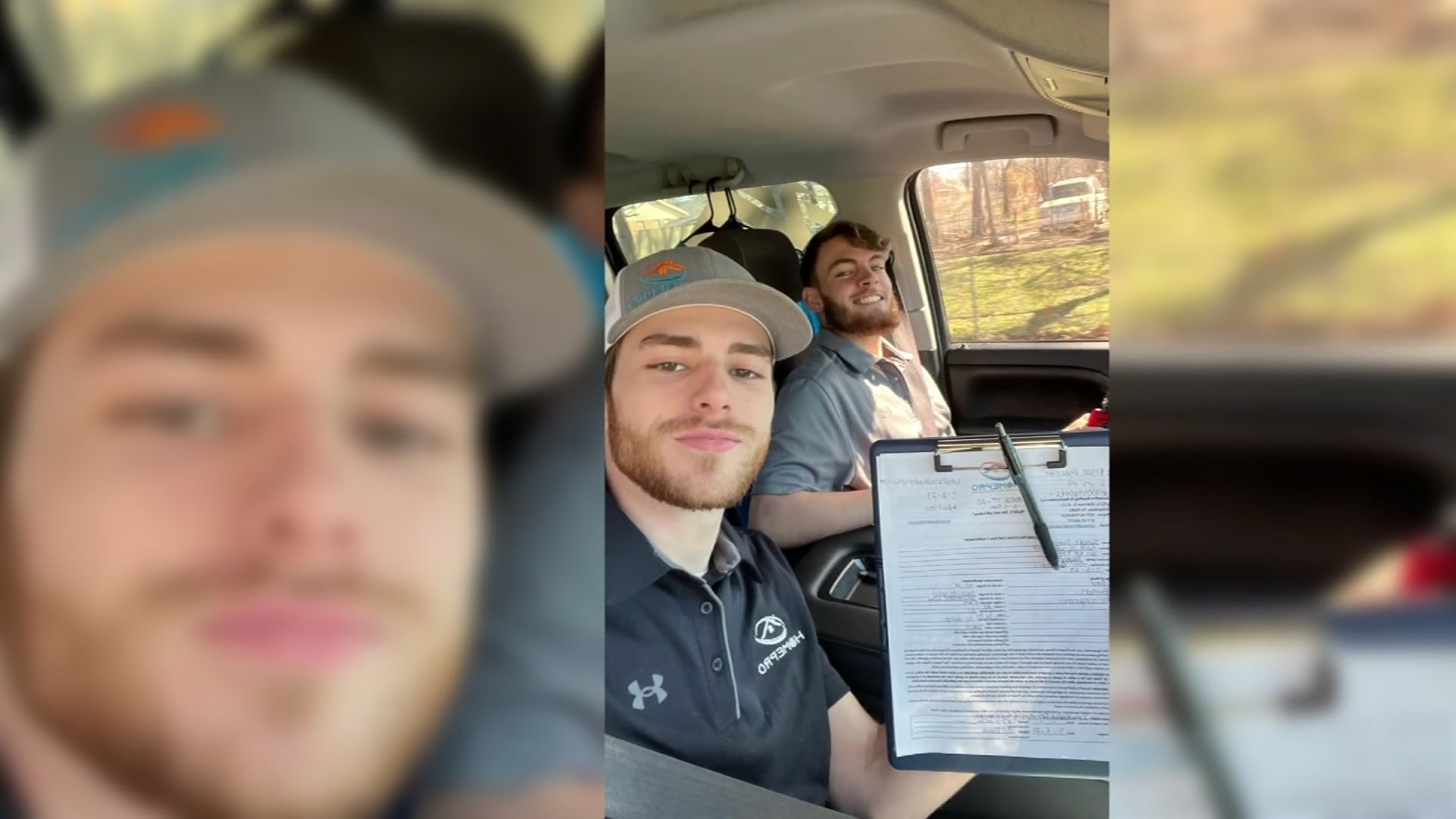Two horrific scenes, one in Arlington and a second alongside a darkened stretch of road in Oklahoma, forced police officers to make immediate and dangerous life-or-death decisions. In each scene, a man in distress had drenched himself in gasoline and was threatening suicide. The question facing officers, do they use a Taser to disable the person, despite well-documented warnings that it may start a fire, or do they risk the man harming himself and potentially others?
In both cases, officers decided to pull the trigger on the Taser. The outcome in both began with tortured cries, the acrid smell of burning flesh and finally, possibly even mercifully considering their awful injuries, death.
NBC 5 Investigates studied the cases of Gabriel Olivas, of Arlington, who died in July 2017, and Dana Carrothers, who died that following November near the small town of Lindsay, Oklahoma, after both men, covered in gasoline, were struck by a Taser weapon fired by police.
No official ruling was made in either case on what actually started the fires, though police reports said fire consumed both Olivas and Carrothers immediately after they were struck by the charged electrodes of a Taser.
NBC 5 Investigates requested Taser policies from two dozen Texas law enforcement agencies and found that they vary widely on what to do when a flammable substance is nearby.
For years, Axion, the maker of Tasers, has warned that deploying the weapon near a combustible substance "can result in a fire or explosion."
Local
The latest news from around North Texas.
Axion said in a statement that, as of last April, it was aware of that happening a dozen times, causing eight deaths and four burns. The number of fires pale in comparison to the "more than 4 million uses of Taser CEWs (Conducted Energy Weapons) around the world, saving more than 220,000 lives," the statement said, without elaborating on how far those numbers go back.
The company said in its training materials that "when possible, avoid using … in known flammable hazard conditions."
Some police departments include similar warnings in their use-of-force policies, such as in Dallas where officers are told, in capital letters, they "will not" deploy a weapon near a flammable substance.
But at least nine departments do not include a fire warning in their policies, opting, instead, to address the potential risks in their training materials.
Jerry Staton, a former police officer and master Taser instructor, said the fire risks should be spelled out in both training and in the official use-of-force policy, which officers are required to follow.
"If you are training one thing and your policy says something else, then …that's a recipe for disaster," Staton said, in an interview with NBC 5 Investigates.
Arlington Police Chief Will Johnson refused to comment on the Olivas case because Olivas' family has filed a lawsuit against the city.

Eight years ago, Johnson helped develop a national model on police Taser policies, which included that the weapon "should not be used in the known presence of combustible vapors and liquids."
But while risks of a Taser-related fire were addressed in training, the Arlington Police Department did not include it in its official force policy until 2018, the year after Olivas burned to death after being struck by a Taser.
On that day, police rushed to help Olivas and his family, with emergency radio channels recording the chaos.
"Subject is currently threatening to burn the house down," arriving officers are told.
Olivas appears suicidal. He's poured gasoline on himself inside the home.
An officer shouts: "Show me your hands! Show me your hands!"
Selina Ramirez had hoped police could save her common-law husband and prevent a fire. Instead, she said, police ignited one.
"One of the cops says, 'If we Tase him, he's going to light on fire.' Not even a second later, they Tase him. Soon as he lit on fire, everybody ran," said Ramirez, who witnessed her husband catch on fire.

Bodycam recordings capture someone telling the badly burned Olivas: "Stay with me buddy. Stay with me, OK? Keep breathing, man."
Olivas died days later at a hospital.
A police report by one of the Arlington officers confirmed he shouted that a Taser could set Olivas on fire, but two other officers in the room deployed their Tasers.
A Tarrant County grand jury declined to bring charges in the case.
 NBC 5 News
NBC 5 NewsFour months later, in rural Oklahoma, Dana Carrothers was also in distress. His mother told NBC 5 Investigates he suffered from bipolar disorder.
Police pulled him over near the small town of Lindsay on reports that he was acting suicidal, possibly armed and carrying a red can.
"Lindsay, be advised he's poured gasoline all over himself. He's refusing to get out of the vehicle," an emergency dispatcher said in a recording obtained by NBC 5 Investigates.
Police said Carrothers got out of his vehicle with a lighter and ignored their commands, at which time a Lindsay officer deployed his Taser. What followed was an eruption of fire.
"It was just so horrific. I can't even…," Freda Carrothers said, her voice trailing off as she closed her eyes, shook her head and continued talking about her son.
"You can't even believe it. It's just too awful," she said.
In the living room of their Iowa home, Freda and Donald Carrothers said they want all police use-of-force policies to include the fire risks of using a Taser.
"If they ever lost someone because of that, they would want it in there. I mean, it only makes sense that that would save some lives. I think it should be stressed more," Freda Carrothers said.

Stephen Mills, the city manager of Lindsay who oversees the police department, said the officer had no better choice that night because the other option would have been even more deadly – pulling the trigger of a gun.
"In his mind, he believed he had the option of stopping this without killing this guy," Mills said, adding: "It turned out to be a bad judgment call. Let me rephrase that, it turned out not to make a difference."
Mills said the officer who tasered Carrothers has since left police work, haunted by what had occurred.
An Oklahoma state prosecutor ruled that the officer's actions were, "justified and appropriate under the law."

But for the families of Gabriel Olivas and Dana Carrothers, the most appropriate thing to do would be to keep the Taser holstered when someone is at risk of catching fire.
They live nearly a thousand miles from each other, but there's closeness in their hurt.
Freda Carrothers -- "This whole thing was just a nightmare. And to think of the anguish that he went through … It breaks my heart."
Selina Ramirez – "They killed my husband. They took my kids father from them … You don't know what that does to somebody."
Arlington officials are asking a judge to dismiss a civil suit filed by Olivas' family. A grand jury declined to bring charges against the officers who tased Olivas. Read their account of their response and the moments leading up to Olivas being engulfed in flames here.
Friday night at 6 p.m., see part two of this story and learn more about a local police department that may make changes to its use-of-force policy following this NBC 5 investigation.



